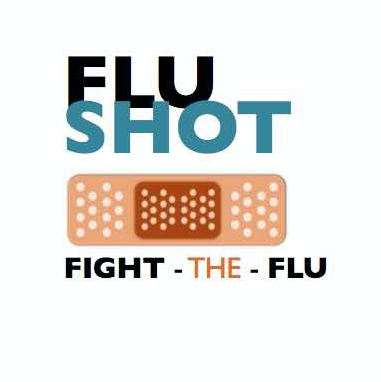Pre-clinical
success for universal flu vaccine offers hope
University of Oxford’s
Department of Zoology
 Influenza is thought to be a
highly variable virus, able to mutate and escape immunity built up in the
population due to its circulation in previous seasons.
Influenza is thought to be a
highly variable virus, able to mutate and escape immunity built up in the
population due to its circulation in previous seasons. However, influenza seasons tend to be dominated by a limited number of antigenically and genetically distinct influenza viruses.
This creates a paradox as influenza is thought of as being highly variable while in reality influenza seasons are dominated by only a few strains.
Mathematical models produced in
Professor Sunetra Gupta’s group at the University of Oxford over the past 20
years have sought to find an answer to this paradox.
Finally, through a collaborative approach across multiple departments, the group believes they have the answer, demonstrated in a paper published in Nature Communications.
Finally, through a collaborative approach across multiple departments, the group believes they have the answer, demonstrated in a paper published in Nature Communications.
Dr Craig Thompson said: ‘The integrated approach to vaccine design that we have applied to flu has to the potential to be applied to other previously intractable pathogens and could revolutionise the way we develop vaccines.’
Professor
Sunetra Gupta said: ‘I think this work serves a good example of how
evolutionary models can have translational impact. We have gone from a
prediction of a mathematical model to a blueprint for a universal influenza
vaccine. The outstanding teamwork coordinated by Dr Thompson is what made
it all possible.’
The research team theorized that parts
of the virus targeted by the immune system are, in fact, limited in variability
and act as constraints on the evolution of the virus.
Dr Craig Thompson in Professor Gupta’s group has now identified the location of these regions of limited variability.
He has shown that such locations are targeted naturally by the immune system and through vaccination studies has shown that regions of influenza viruses that circulated in 2006 and 1977 were able to protect against infection with an influenza virus that last circulated in 1934.
Dr Craig Thompson in Professor Gupta’s group has now identified the location of these regions of limited variability.
He has shown that such locations are targeted naturally by the immune system and through vaccination studies has shown that regions of influenza viruses that circulated in 2006 and 1977 were able to protect against infection with an influenza virus that last circulated in 1934.
The results of these studies can be
exploited to create a novel type of ‘universal’ or broadly protective influenza
vaccine, which once administered would provide lifelong protection against
influenza.
The team also hopes to apply the approach to other viruses such as HIV and HCV and believes that they can use it to produce a vaccine that protects against the common cold.
The novel approach to vaccine design is outlined in the paper published in Nature Communications. Furthermore, such vaccines should be able to be produced in a low-cost manner, enabling healthcare providers such as the NHS to save money, unlike many new vaccines and drugs coming to the market.
The team also hopes to apply the approach to other viruses such as HIV and HCV and believes that they can use it to produce a vaccine that protects against the common cold.
The novel approach to vaccine design is outlined in the paper published in Nature Communications. Furthermore, such vaccines should be able to be produced in a low-cost manner, enabling healthcare providers such as the NHS to save money, unlike many new vaccines and drugs coming to the market.
This study also presents one of the
first examples of where a mathematical model of the evolutionary dynamics of an
infectious disease has led to the experimental identification of a novel
vaccine target.
The novel approach won an MRC Confidence in Concept Award in 2016, a Royal Society Translational Award in 2017 and an ERC Proof of Concept grant in 2018.
The novel approach won an MRC Confidence in Concept Award in 2016, a Royal Society Translational Award in 2017 and an ERC Proof of Concept grant in 2018.
The
WHO estimates that influenza kills 260,000-650,000 people and causes 3-5
million cases of severe illness each year. This burden typically falls on the
elderly and young children, especially in developing countries.
The best way to protect against influenza is through vaccination, although the problem with this is that the current influenza vaccine has to be administered each year and varies in its effectiveness.
The best way to protect against influenza is through vaccination, although the problem with this is that the current influenza vaccine has to be administered each year and varies in its effectiveness.
Read the blog in Nature Microbiology 'From a mathematical model to a
new influenza vaccine'.